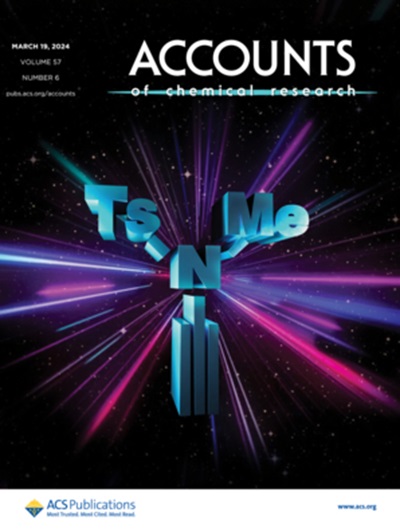Striving to Disclose the Electrochemical Processes of Organic Batteries
IF 16.4
1区 化学
Q1 CHEMISTRY, MULTIDISCIPLINARY
引用次数: 0
Abstract
Organic/polymeric materials are promising as electrode materials for batteries because of their advantages of flexibility, high specific capacity due to the possible multielectron transfer, low cost from green natural resources, and weak intermolecular interactions that enable the storage of low-cost large-sized or multivalent metal ions. However, the development of organic electrode materials (OEMs) and organic batteries and the understanding of the electrochemical process face great challenges in the characterization of polymers and the charge storage mechanisms: (1) the charged and/or discharged states of OEMs are often air unstable, which makes the ex situ characterizations susceptible to the interference of air. (2) OEMs, particularly polymeric materials, are designed to be insoluble to deliver high cyclability, which makes it difficult for them to be separated from the electrode. (3) Possible multielectron transfer makes it difficult to determine whether the proposed charge storage mechanism or the experiment results are wrong when the actual capacity mismatches with the theoretical capacity based on the proposed mechanisms. (4) It is difficult to achieve single crystals of polymers, and hence, it seems impossible to know the actual locations of the stored ions in the polymers. (5) The typical methods for characterization of insoluble polymers are only qualitative, and it is challenging to quantify the amount of stored ions. (6) Even for most in situ characterizations, they can only give the tendency of qualitative structural evolution.

努力揭示有机电池的电化学过程
有机/聚合物材料由于其柔韧性、可能的多电子转移带来的高比容量、绿色自然资源的低成本以及弱的分子间相互作用能够存储低成本的大尺寸或多价金属离子等优点,成为电池电极材料的发展前景。然而,有机电极材料(oem)和有机电池的发展以及对电化学过程的理解在聚合物表征和电荷存储机制方面面临着巨大的挑战:(1)oem的充电和/或放电状态通常是空气不稳定的,这使得非原位表征容易受到空气的干扰。(2) oem,特别是聚合物材料,被设计成不溶性,以提供高循环性,这使得它们很难从电极分离。(3)当实际容量与理论容量不匹配时,由于可能存在多电子转移,很难判断所提出的电荷存储机制或实验结果是否错误。(4)聚合物的单晶是很难实现的,因此,似乎不可能知道聚合物中储存离子的实际位置。(5)表征不溶性聚合物的典型方法仅是定性的,并且难以量化存储离子的数量。(6)即使对大多数原位表征,它们也只能给出定性结构演化的趋势。
本文章由计算机程序翻译,如有差异,请以英文原文为准。
求助全文
约1分钟内获得全文
求助全文
来源期刊

Accounts of Chemical Research
化学-化学综合
CiteScore
31.40
自引率
1.10%
发文量
312
审稿时长
2 months
期刊介绍:
Accounts of Chemical Research presents short, concise and critical articles offering easy-to-read overviews of basic research and applications in all areas of chemistry and biochemistry. These short reviews focus on research from the author’s own laboratory and are designed to teach the reader about a research project. In addition, Accounts of Chemical Research publishes commentaries that give an informed opinion on a current research problem. Special Issues online are devoted to a single topic of unusual activity and significance.
Accounts of Chemical Research replaces the traditional article abstract with an article "Conspectus." These entries synopsize the research affording the reader a closer look at the content and significance of an article. Through this provision of a more detailed description of the article contents, the Conspectus enhances the article's discoverability by search engines and the exposure for the research.
 求助内容:
求助内容: 应助结果提醒方式:
应助结果提醒方式:


